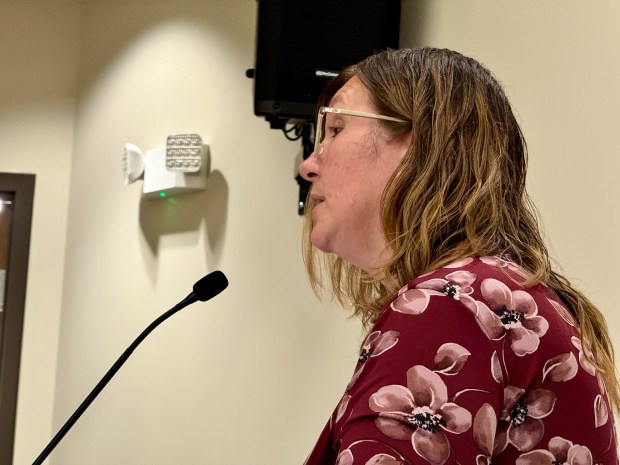Beginning Oct. 1, Portage residents’ sewer bills will go up $4 a month, a “speed bump” on the way to larger increases on Jan. 1 of each of the next three years.
The City Council voted 6-1 Tuesday to approve the increase, with Councilman Ferdinand Alvarez, D-At-large, voting against it. “I can’t in good conscience support this rate increase,” he said.
“This particular vote, I’ve been going back and forth all day long, all week long,” Alvarez said. He was thinking of people for whom this increase would be too much. “We still hear about the wheel tax that was passed a number of years ago.”
Collin Czilli, D-5th, who has been on the council for nine years, was sympathetic. “This is the hardest decision I’ve had to make in nine years,” he said. “I think for the rest of you, this will probably be the hardest decision you’ll make this term.”
“I agree,” said Councilwoman Gina Giese-Hurst D-1st, but looking at the list of necessary sewer projects, she knew she had to vote for the increase.
“There’s never a right time, but there is a wrong time to wait,” Mayor Austin Bonta said.
The rate increases will pay for $31 million in projects meant to keep the sewage flowing to the treatment plant and limit the amount of stormwater being sent to the plant by leaky pipes.
Giese-Hurst asked Sanitation Superintendent Tracie Marshall to put the city’s rates in perspective.
“We’re very low. We’re one of the lowest,” Marshall said. “The state average right now is $78 a month. We’re standing at $36.50.”
The Oct. 1 increase will bring the sewer rate to $40.50, followed by $53 on Jan. 1, $56.50 in 2026, and $58.20 in 2027.
“I’ve had two former mayors who have told me, have you considered selling the plant to a private utility,” Bonta said. “I said it would be over my dead body.”
“it is much better to have something like this be nonprofit,” he said. “Everything gets reinvested in the plant” while keeping rates low.
Still, there’s such a thing as too low. That would mean failing to generate enough money to keep the system reliable, which would erode the public’s trust, he said.
“If somebody wanted to make a list of the cities in Indiana that combine safety and affordability, I imagine Portage would rank very high on that list,” Bonta said.
Bonta credited his predecessor, Sue Lynch, for getting the city moving on addressing sewer needs.
“For me, Sue really got this process started with the clarifiers,” he said. “That was all done under the leadership of Tracie, but also with the cooperation of Sue Lynch and her predecessor.”
Councilman Bob Parnell. R-2nd, asked, “Why are we here now instead of taking care of this 20, 25 years ago? Why have things gotten so bad?”
“You can’t blame any one person because it is a team effort,” Bonta told him. “It’s not a conspiracy where everyone’s in on it, it’s a conspiracy of things not coming together.”
In 2016, the city borrowed $10 million to $12 million for work at the treatment plant, including $3 million for a concrete pad for drying sludge. That pad was estimated to cost $1.5, but bids were high. “But in the long run, it saved us a lot of money. It really worked,” Czilli said,
The drying pad removes the liquid from waste before it is applied to fields for fertilizer. That means it isn’t landfilled, either, Marshall said.
Money from the bipartisan federal infrastructure bill and other major federal initiatives is now available but wasn’t four or eight years ago, Czilli noted.
Among the needs being addressed with the $31 million borrowed for the construction projects is an interceptor line for the city’s industrialized north side. North side lift stations are far over capacity, in one case nearly 1,200% beyond rated capacity, Marshall said.
The large interceptor line will serve as a major artery to the plant.
The city plans to replace its worst lift stations. They have a life expectancy of 15 to 20 years but in some cases are as much as 40 years old. New ones will address safety issues like confined spaces as well as increasing capacity and reliability, she said.
The ultraviolet filtration system at the plant will be replaced as well, bringing it back up to state standards.
A major component of the infrastructure plan is to reline pipes in the worst condition. Relining extends the life of the pipe at a cost well below replacing it. Relining helps prevent infiltration by stormwater, reducing the volume of water that needs to be treated at the plant. That reduces operating costs at the plant.
Adding urgency to the council’s decision was the availability of $25 million at a very low interest rate through the state’s revolving loan fund, which channels federal and state money to local government projects. Currently, the rate is about 2%, Marshall said.
The remaining borrowed money will be loaned at well below the market rate, she said.
The state revolving loan program is highly competitive. Portage lucked out this time, becoming the sixth of six projects to be funded.
Marshall said a consultant’s 2021 report recommended the city spend $93 million to address these issues. She and others balked at spending that much money, prioritizing critical needs and others that can wait or can be done in-house.
The maintenance building at the treatment plant is in poor condition, but that can be replaced without borrowing money from the state, she said.
With the new rates, the city is not only putting itself in a position to repay the new loans but also address some deferred maintenance, Marshall said.
The council decided at its meeting last week to increase the rate by $4 this year but scheduled Tuesday’s special meeting to decide when the rate increase should take effect.
“I do feel September is just too soon. We need to let our people know,” Giese-Hurst said.
The information was on recent utility bills and there were newspaper stories about it, but some residents still might not know about it.
“Anything from now to January is a speed bump,” Bonta said.
“I will also walk door to door” to let residents know, he said. “If any of you guys want to walk with me, you’re welcome to. I could probably use some backup.”
Doug Ross is a freelance reporter for the Post-Tribune.




